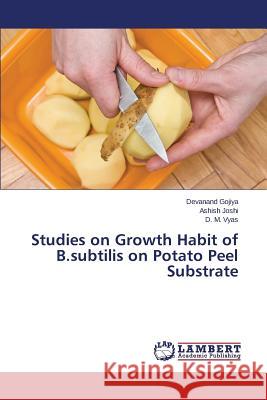Studies on Growth Habit of B.subtilis on Potato Peel Substrate » książka
Studies on Growth Habit of B.subtilis on Potato Peel Substrate
ISBN-13: 9783659624599 / Angielski / Miękka / 2014 / 56 str.
Processed foods varieties like potatoes are very popular in developing era. There are plenty of industries engaged in this kind of work. The main problem in these industries is disposal of the waste materials produced during processing of potatoes, it creates environmental pollution. So, use of this waste materials mainly potato peel as a raw material for enzyme production will be possible with the help of starch hydrolyzing bacterial strain, B.subtilis. Sufficient amount of potato peel is necessary for the optimum growth of bacteria. So, the correct peel: agar ratio is also very much important. In a present work 10 gm peel per 100 ml nutrient agar media is sufficient and optimum ratio for the growth of bacteria. Physical conditions also played an important role for the growth of bacteria. So, 8 treatments with 3 replication is carried out and from that we found that T7 treatment is the best in which the temperature was maintained at 37oC and pH was maintained at 8.0. The second next treatment, T3 also gave good results in which the bacteria present in petriplate kept at room temperature and the pH was maintained at 8.0.
Processed foods varieties like potatoes are very popular in developing era. There are plenty of industries engaged in this kind of work. The main problem in these industries is disposal of the waste materials produced during processing of potatoes, it creates environmental pollution. So, use of this waste materials mainly potato peel as a raw material for enzyme production will be possible with the help of starch hydrolyzing bacterial strain, B.subtilis. Sufficient amount of potato peel is necessary for the optimum growth of bacteria. So, the correct peel: agar ratio is also very much important. In a present work 10 gm peel per 100 ml nutrient agar media is sufficient and optimum ratio for the growth of bacteria. Physical conditions also played an important role for the growth of bacteria. So, 8 treatments with 3 replication is carried out and from that we found that T7 treatment is the best in which the temperature was maintained at 37oC and pH was maintained at 8.0. The second next treatment, T3 also gave good results in which the bacteria present in petriplate kept at room temperature and the pH was maintained at 8.0.











